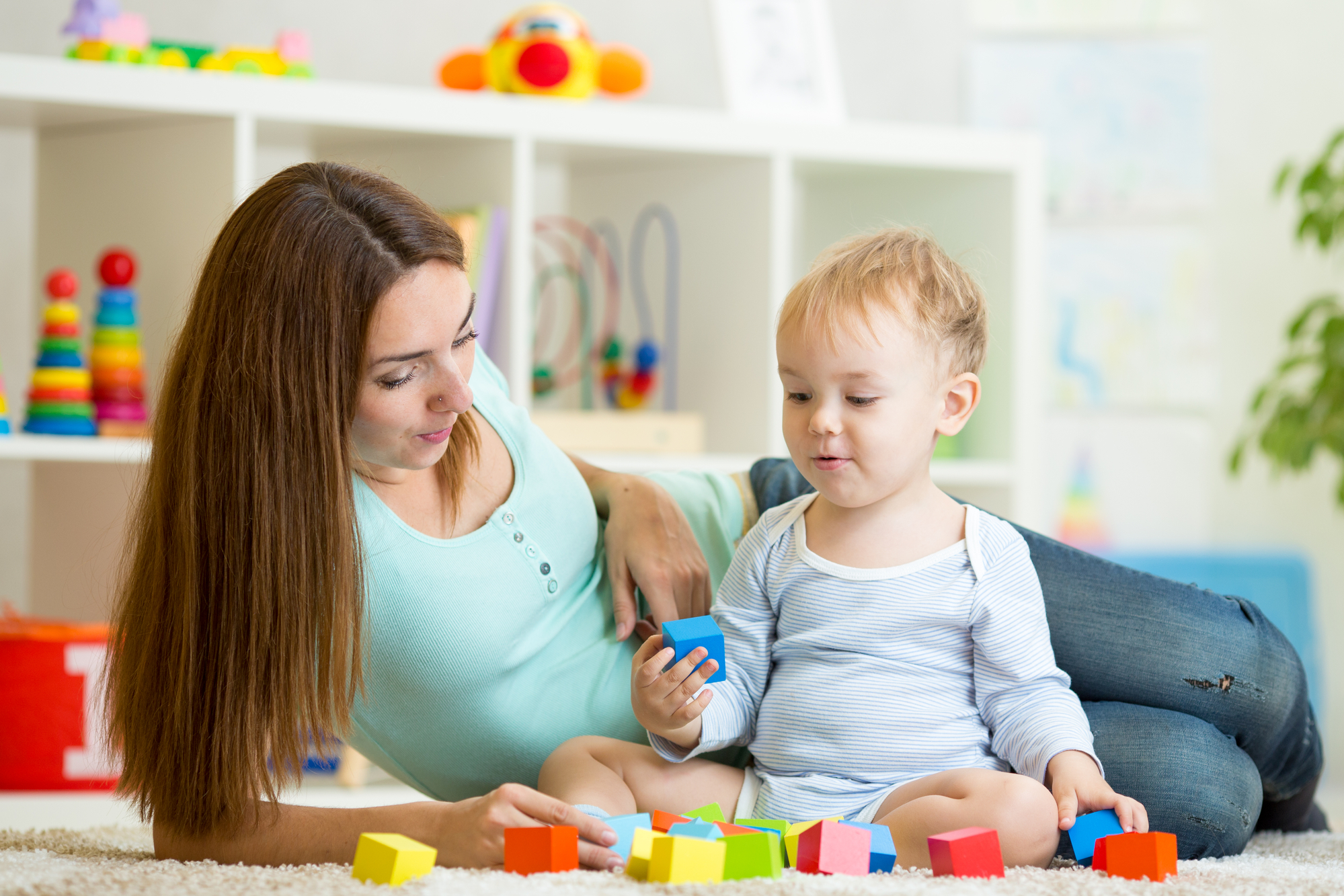By Dean of Research and Program Development, MindChamps, Brian Caswell
Over the years, one of the recurrent questions we receive from parents, though expressed in many different ways, is this one:
‘What can I, as a parent, do to help train my child’s brain at home?’
This is both an essential and a potentially dangerous question, because, while it touches upon the important duty of parents to help prepare their children for the demands of the complex world we have created for them, it tends to point in the direction of drilling and ‘hothousing’ children at a young age. Unfortunately, this is not how young children – or even most adults – actually learn.
Children are learning machines. It is how they develop from a mewling, uncommunicative bundle to a thinking, talking semi-independent human being in the space of four or five short years. It is important to realise, however, that everything your child experiences ‘trains’ his or her brain. The question is whether that ‘training’ is beneficial or detrimental to future success.
Basketball great, Michael Jordan expressed it perfectly, when he wrote:
‘You can practise shooting eight hours a day, but if your technique is wrong, all you become is vary good at shooting the wrong way.’
Perhaps, then, the question could better be phrased in this way:
‘What can I, as a parent, do to help my child become an eager and enthusiastic life-long learner?’
Filling a child’s day with boring tasks and age-inappropriate demands, which overwhelm their ability to ‘make sense’, creates frustration and resistance and, in the long run, a ‘reluctant learner’. On the other hand, filling a child’s day with exciting challenges to be explored and solved (both individually and collaboratively) and shared activities that promote engagement and emotional connection builds confidence and an enthusiasm for learning that is life-long.
Reading together, playing board-games and puzzles, playing sports, making up stories together, having fun, ‘hands-on’, with numbers, words, colours and shapes are all playful activities which enrich a child’s experience of the world and encourage intellectual and emotional maturity in a natural and satisfying way – and they don’t cost anything.
You see, learning is all about connecting – associating diverse concepts and experiences and forming neural networks which store and organise the learning. Young children learn through their senses and through physical interaction – not by ‘making sense’ of things in any logical or operational way. For young children, experience is the teacher, and the quality of the experience determines the quality of the learning.
Educationist O. Fred Donaldson once wrote:
‘Children learn as they play. Most importantly, in play children learn how to learn.’
This means that if we can make our homes havens of play and discovery, if we can engage, with our children, in fun activities which help them see, for themselves, how things connect, then we are helping them make the discoveries and the associations which bring meaning to their world.
What better definition of ‘learning’ can there be?
So, it turns out that the most effective way to teach a child to become an enthusiastic, life-long learner, is not to try to teach them at all! And this should come as welcome news for all parents.
The internet is filled with suggestions for activities for Toddlers and Pre-Schoolers – many brilliant and exciting, some less so. When choosing games and activities to share with your child, look for those which are ‘hands on’ and fun, which make problem-solving a game and allow for exploration, experimentation, trial and error. Children learn as much from their mistakes as from their successes, so choose activities where ‘failing’ is part of the fun, and finally succeeding is exciting and satisfying. And remember to praise effort and ingenuity as much as ‘results’.
Activities which combine motor skills with problem-solving and creativity; independent discovery with collaborative problem-solving and language and numeracy skills with music and movement (or any other combinations of these key elements) are known as integrative activities and research shows that integrative activities are the most complete and effective in promoting cognitive, social/emotional and physical development in early-childhood and beyond.
Here are some integrative activities to try at home. They are adapted from Magic Moments 2: Learning to Play, Playing to Learn, a book which I have written with my dear friend, the legendary Singaporean educator, Carmee Lim. It is due out later this year.
-
Thumbprint Mice
What You’ll Need:
- A stamp pad
- Paper
- Crayons or markers
Directions:
- Have your child press her thumb on a stamp pad and then press it onto paper.
- Show your child how to draw a mouse tail, nose and ears on the thumbprint to complete each mouse.
- Do this several times to make a mouse family.
- Use your own thumb and perhaps one of an older or younger sibling, and then compare the different sizes each makes.
- You can even create little mouse stories, which you illustrate using your ‘thumbprint mice’.
- See what other animals you can create, using the imprints of fingers, toes, or even other objects. The possibilities are limited only by your child’s imagination, which is no limitation at all!
-
Fantasy Fishing
This game takes a little ‘crafty’ preparation the first time you play, but it is well worth it!
What You’ll Need:
- Coloured cardboard or construction paper (5 colours)
- Children’s scissors
- Pens, crayons, or markers
- Glitter and other decorations
- 10 Paper clips (metal)
- 2 small magnets
- 2 Sticks , string and super-glue
- A small plastic or paper bag
- A small box, pot, or other container
Directions:
- Make 2 fishing-rods, by tying string around the end of a stick, then gluing a magnet on the end of the string.
- Cut 10 fish shapes out of 5 different coloured pieces of cardboard or construction paper (2 per colour).
- Decorate them one side with coloured pens, glitter and other decorations, and on the other side, at random, write the numbers 1 – 10.
- On each fish write a different instruction: ‘Bark like a dog and roll on your back with your hands and feet in the air’; ‘Hold a stick in your mouth and touch each of your toes with it’; ‘Run and touch the wall, then skip back’ – use your imagination, or get your child to make suggestions – include 4 with no instructions, which are just marked ‘wild-fish’.
- Punch a hole in each fish near the nose, then slide a metal paper-clip through the hole.
- Cut out 10 small squares (2 per colour) and write the numbers 1 – 10 on them – so that the numbers match those on the appropriate coloured fish (if the red fishes are 2 & 7, then the two red squares will also be numbered 2 & 7 etc.).
- Place the squares into the plastic / paper bag.
- Place all the fish in a small box or container, so that the decorated sides are up, and the numbers and instructions are hidden.
- Now, you are ready to start. Begin by getting your child to draw a square from the bag. Whatever the colour, you each have to catch a fish which is the matching colour. See who can ‘hook’ it first.
- If you accidentally catch the wrong coloured fish, you have to read the instruction on the back and perform the forfeit, then put it back and catch one that is the right colour.
- Once you have both caught your fish, look on the back to see which fish matches the number on the square. Read the instruction on the back of that fish out loud. The person who caught it has to perform the forfeit written on the card.
- If the fish is marked ‘wild-fish’, the other fisherman gets to name the forfeit.
- Once the forfeit is performed, the fish go back into the pond, but the square remains out of play, and the process is repeated until all the squares are used up – or until the excitement begins to wane.
In a variation on this game, place the fish with their numbers facing up, and practice number recognition, by asking her to catch you a number 4 fish, or (for older kids) two fish that add up to 7 etc.
-
Mouse in the House
What You’ll Need:
- A mouse story-book and / or movie
Directions:
- Find a book about a mouse (eg: The Tale of Despereaux by Kate DiCamilio; Town Mouse, Country Mouse, retold by Susanna Davidson) or watch a ‘mouse’ movie (eg: An American Tail (1986) directed by Don Bluth, Stuart Little (1999) directed by Rob Minkoff or even Ratatouille (2007) directed by Brad Bird).
- Ask your child to imagine what life would be like as a mouse.
- Get down on the ground and look at the room from a ‘mouse-eye view’, then, have your child describe the world as if he is a mouse. What does the room look like? How do people look now? What can a mouse see that we can’t?
- Make up a mouse story together and act it out, or use a toy mouse if you have one.
- What would it be like to be a mouse who grew as big as a house? Let your child play with that idea.
As you enter your child’s world and give in to lure of just having fun, take comfort in the fact that for your child playing and learning are one and the same thing.
Social links:
https://www.facebook.com/mindchamps.au/
https://www.youtube.com/c/mindchamps
Biography:
Brian Caswell is an internationally-acclaimed, multi-award-winning author, researcher and educator who has dedicated his time to research into the psychology and neuroscience of the learning of the brain.









